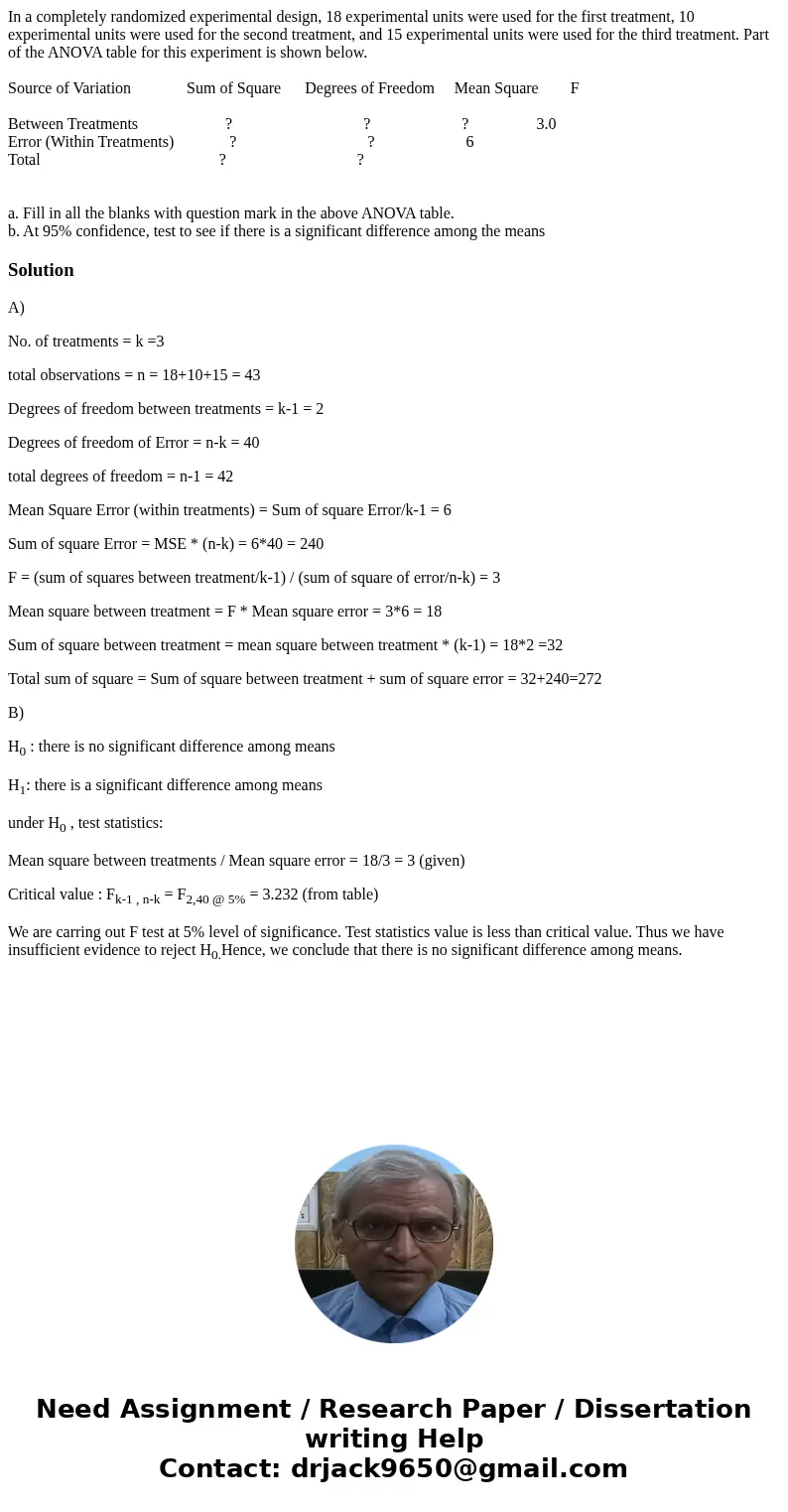In a completely randomized experimental design 18 experiment
In a completely randomized experimental design, 18 experimental units were used for the first treatment, 10 experimental units were used for the second treatment, and 15 experimental units were used for the third treatment. Part of the ANOVA table for this experiment is shown below.
Source of Variation Sum of Square Degrees of Freedom Mean Square F
Between Treatments ? ? ? 3.0
Error (Within Treatments) ? ? 6
Total ? ?
a. Fill in all the blanks with question mark in the above ANOVA table.
b. At 95% confidence, test to see if there is a significant difference among the means
Solution
A)
No. of treatments = k =3
total observations = n = 18+10+15 = 43
Degrees of freedom between treatments = k-1 = 2
Degrees of freedom of Error = n-k = 40
total degrees of freedom = n-1 = 42
Mean Square Error (within treatments) = Sum of square Error/k-1 = 6
Sum of square Error = MSE * (n-k) = 6*40 = 240
F = (sum of squares between treatment/k-1) / (sum of square of error/n-k) = 3
Mean square between treatment = F * Mean square error = 3*6 = 18
Sum of square between treatment = mean square between treatment * (k-1) = 18*2 =32
Total sum of square = Sum of square between treatment + sum of square error = 32+240=272
B)
H0 : there is no significant difference among means
H1: there is a significant difference among means
under H0 , test statistics:
Mean square between treatments / Mean square error = 18/3 = 3 (given)
Critical value : Fk-1 , n-k = F2,40 @ 5% = 3.232 (from table)
We are carring out F test at 5% level of significance. Test statistics value is less than critical value. Thus we have insufficient evidence to reject H0.Hence, we conclude that there is no significant difference among means.

 Homework Sourse
Homework Sourse